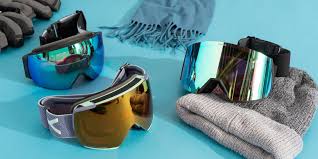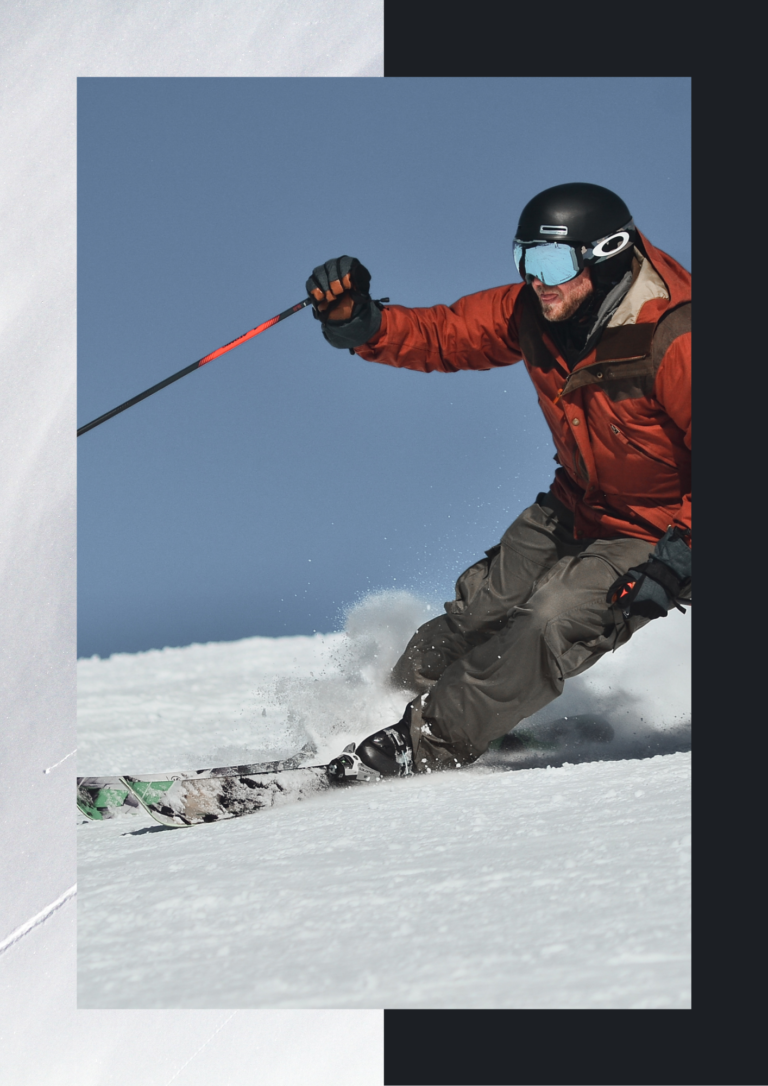How to Keep Ski Goggles from Fogging Up 12 Helpful Tips
Foggy ski goggles can turn a thrilling day on the slopes into a frustrating experience, but there are several strategies to maintain clear vision. One of the most effective methods is to proper ventilation look for goggles with vents that allow air circulation.
Keeping your goggles clean and dry internally can drastically reduce fogging consider using anti fog spray specifically designed for ski gear or even a homemade solution like diluted dish soap applied lightly.
Why do Ski Goggles fog up?
Foggy ski goggles can turn an exhilarating day on the slopes into a frustrating ordeal. The primary culprit behind this annoyance is the temperature differential between the warm, moist air generated by our breath and the cold, dry air outside.
You wear a pair of goggles, your exhaled breath rises inside them, creating a perfect recipe for condensation in high humidity environments or when you’re exerting yourself. But it’s not just about moisture; the design and material of your goggles can exacerbate fogging issues.
Overlooked factor is goggle ventilation. Many modern ski goggles come equipped with vents meant to airflow and reduce fogging. If these vents are blocked by snow or ice, their effectiveness diminishes dramatically.
Wearing a well fitted helmet can also make a significant difference any gap between helmet and goggle can disrupt airflow patterns that they sit snugly together allows for better climate control within your eyewear.
Consider investing in anti fog treatments or using recommended techniques like pre heating your goggles before hitting the slopes. Wiping down lenses with specialized solutions helps create an invisible barrier against moisture accumulation.
Both external conditions and personal gear choices, you can unlock clarity in your vision while navigating those thrilling turns on fresh powder.
How does fogging occur?
Fogging occurs when tiny water droplets condense in the air, reducing visibility and creating that characteristic eerie atmosphere. This phenomenon is primarily driven by temperature differences between the ground and the surrounding air.
When warm, moist air cools down at night or during early mornings near bodies of water it becomes saturated, leading to condensation. The tiny droplets are so small that they can remain suspended in the air for extended periods, contributing to a thick veil of fog.
12 tips for how to keep ski goggles from fogging up
One effective way to prevent your ski goggles from fogging up is to proper fit. Goggles that are too tight can restrict airflow, leading to condensation buildup
. Opt for models with adjustable straps and consider padding that allows for some ventilation without compromising comfort. Pairing your goggles with a well fitting helmet will also help minimize gaps where warm air can escape and cold air can seep in.
Avoid touching the inner lens surface with your fingers
Touching the inner lens surface can seem like a minor oversight, but it has significant implications for both image quality and equipment longevity.
Your fingers make contact with the glass, they leave behind oils, dust, and other contaminants that not only degrade clarity but also introduce unwanted flares or distortions in your photographs. This is particularly detrimental when shooting in low light conditions or capturing fine details where every pixel counts.

2.Make sure the lenses are clean before you put the goggles on
Diving into your aquatic adventures, taking a moment to ensure your goggles’ lenses are crystal clear can make all the difference. Clean lenses not only visibility but also elevate your overall experience in the water.
The last thing you want is to be squinting through fogged or smeared lenses when you’re trying to enjoy a beautiful underwater landscape or navigate an intense swim session.
3.Breathe through your nose instead of your mouth while you’re skiing.
Breathing through your nose while skiing can significantly both your performance and enjoyment on the slopes. When you breathe through your nose, the air is filtered, warmed, and humidified before it reaches your lungs.
This process helps to optimize oxygen exchange, which means more energy for those thrilling runs down the mountain. Nasal breathing engages the diaphragm more effectively than mouth breathing, promoting a steadier rhythm that can help maintain balance during tricky maneuvers.

4.Tuck your face mask or neck gaiter under your goggles
Gearing up for outdoor activities in colder conditions, overlooked is the art of layering your facial protection. Tucking a face mask or neck gaiter under your goggles not only warmth but also mitigates fogging, which can be an annoying consequence of cold air meeting warm breath.
This simple maneuver creates a protective seal that helps trap heat and moisture beneath the goggles lens, providing clearer vision during critical moments on the slopes.
5.Dry your goggles out before storing them
Drying your goggles out properly before storing them is a crucial yet often overlooked step that can dramatically extend their lifespan. Moisture trapped inside the lenses can lead to mold or mildew buildup, which not only damages the goggle’s components but also hampers visibility on your next adventure. Take a moment to rinse your goggles with fresh water and let them air dry in a well ventilated area.
6. Use anti fog spray or coating on the lenses
Foggy lenses can disrupt our daily activities and hinder visibility, but the solution might be simpler than you think. Utilizing an anti fog spray or coating on your lenses can revolutionize how you experience wearing glasses or goggles, in fluctuating temperatures.
These products work by creating a thin film that repels moisture, preventing condensation from forming when moving between environments with different humidity levels.

7.Make sure the vents on your goggles are not blocked by snow or ice.
Your goggles are not just a fashion statement; they’re an essential piece of equipment that can make or break your experience. One often overlooked aspect is the vents on your goggles.
These tiny openings play a crucial role in airflow and moisture management, but they can easily become blocked by snow or ice, leading to fogged up lenses. A moment’s neglect can result in impaired visibility, forcing you to struggle through a winter wonderland with limited sight a recipe for disaster when carving down steep runs.
8.Adjust the straps on your goggles so they fit snugly but not too tight around your face.
The perfect fit for your goggles is essential not just for comfort, but for maximizing visibility and performance. Straps that are too loose can lead to annoying slippage, causing you to miss important moments or struggle with water infiltration.
Overly tight straps can create unwelcome pressure on your head, leading to discomfort and distracting you from the exhilarating experience of diving into crystal clear waters.
9.Lift your goggles up and let them vent for a few minutes
Effective tricks for your skiing or snowboarding experience is lifting your goggles to allow them to vent. When you’re hurtling down a mountain, the combination of sweat, cold air, and fluctuating temperatures can create foggy lenses that impede visibility.
Moment to lift your goggles and let fresh air circulate, you dramatically reduce mist buildup. This seemingly minor adjustment not only clears your vision but also adds an element of mindfulness to your ride it’s a brief pause that can refresh both your perspective and focus.

10.Get moving
Getting moving is a powerful antidote to the sedentary lifestyle that many of us fall into, age dominated by screens and convenience. Physical activity doesn’t always mean hitting the gym it can be as simple as incorporating enjoyable movement into your daily routine. Think of dance breaks cooking, brisk walks during lunch, or even playful sessions with pets. These small bursts of activity not only help burn calories but also spark creativity and rejuvenate our focus.
11.If your goggles get really saturated with moisture switch to another set
Fogging goggles can swiftly derail your experience. You find that your current set is excessively saturated with moisture, it’s best to switch to another pair. This seemingly simple decision can open up new possibilities for clarity and enjoyment beneath the surface. Backup set handy, you flexibility and that your focus remains on the adventure rather than obscured vision.
12.Invest in a pair of ski goggles with a good anti-fog coating and ventilation and helmet with matching vents
Choosing the right ski goggles is crucial for an optimal experience on the slopes. A quality anti fog coating is not just a luxury it transforms your ride, allowing you to navigate tricky trails without interruptions caused by fogged up lenses. Modern technology has brought about innovative venting systems that encourage air circulation shielding your eyes from harsh weather elements. This dual approach maximizes visibility and comfort, your performance and enjoyment as you’re carving through fresh powder.
Conclusion
Preventing your ski goggles from fogging up is essential for maintaining visibility and safety on the slopes. The twelve helpful tips discussed, including using anti fog sprays, proper ventilation, and carefully choosing your gear, you can your skiing experience. Regular maintenance and mindful practices can significantly reduce fogging issues. With these strategies in mind, you’ll be better prepared to tackle the mountain without any obstructions to your view.
FAQ
What materials are best for anti fogging treatments?
Anti fogging treatments usually contain special coatings or sprays that create a hydrophilic surface, helping to prevent condensation.
Can I use household products to prevent fogging?
Yes, some people use soap, shaving cream, or even potato slices as makeshift anti fog solutions; however, results may vary.
Should I clean my goggles before using them?
Yes, cleaning your goggles properly there’s no residue that could exacerbate fogging; always use a microfiber cloth and appropriate cleaner.






